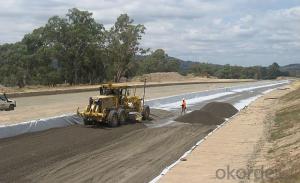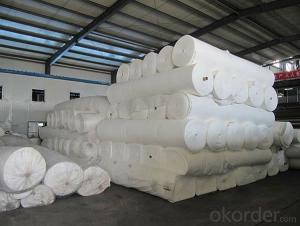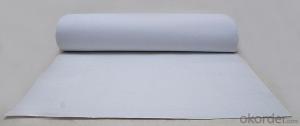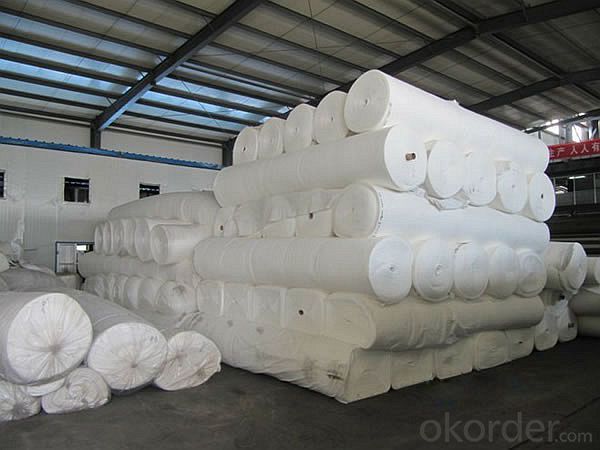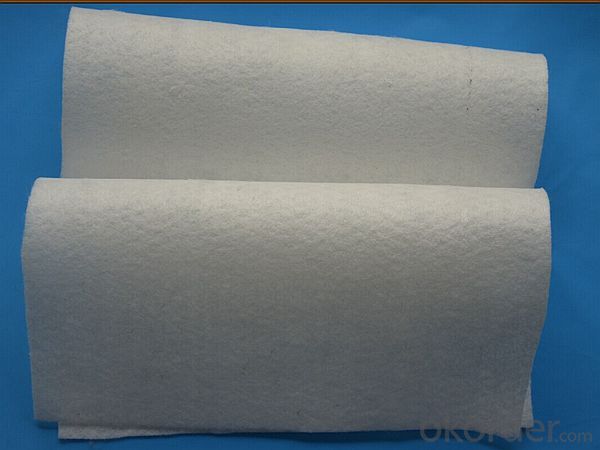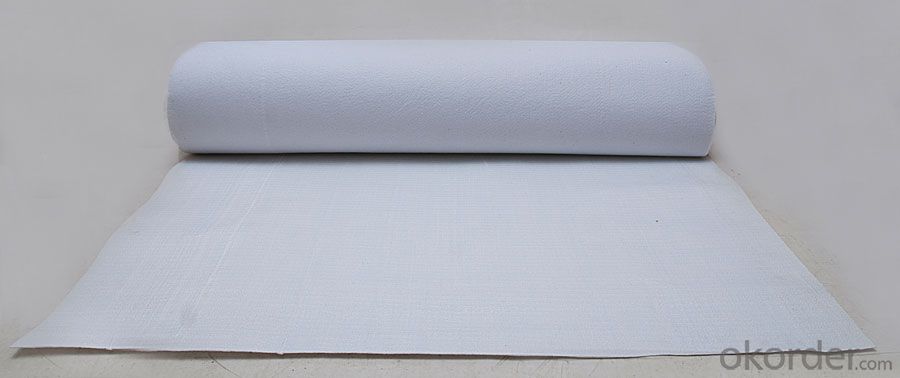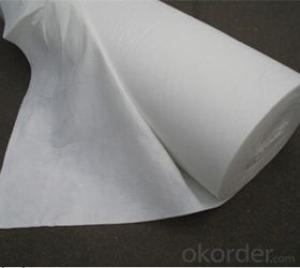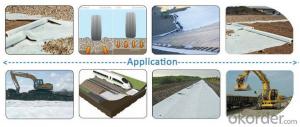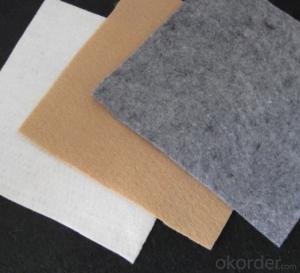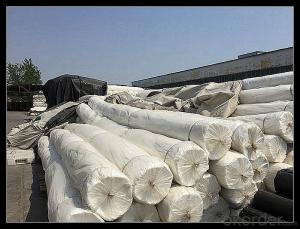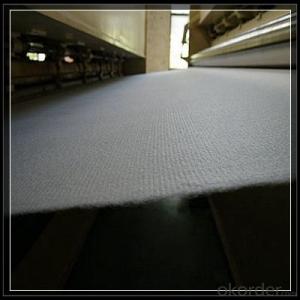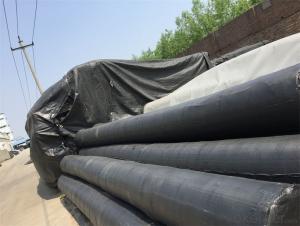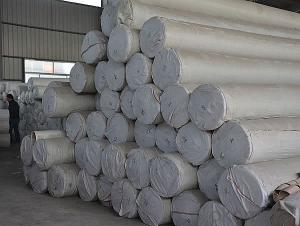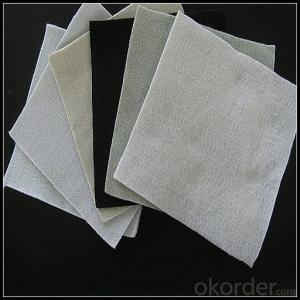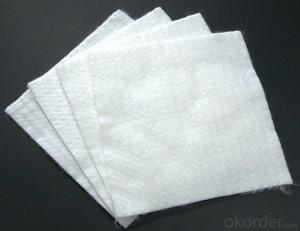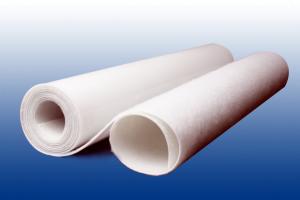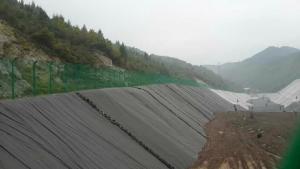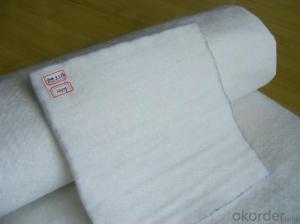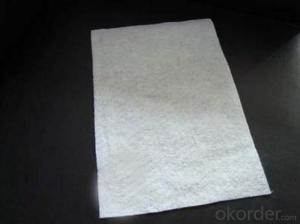Pose Géotextile - Non-Woven Geotextile with Stabilization Non-Woven Fabric Roll
- Loading Port:
- China main port
- Payment Terms:
- TT OR LC
- Min Order Qty:
- 1000 m²
- Supply Capability:
- 1000000 m²/month
OKorder Service Pledge
OKorder Financial Service
You Might Also Like
Specification
Nonwoven Geotextile
Geosynthetics are described or characterized as civil engineering materials that are
intended for use with geological components like so rock or any other civil engineering
associated materials to enhance or transform its behaviour, bringing out revolutions
advantages in abundant area. They are porous textile materials of Non woven, woven or
knitted. Their rise development for the period of the last 15 years has been nothing short
of overwhelming and remarkable.Geosynthetics are up to date and modern construction
products that can be utilized in transportation (rural roads, national state highways,
seaports, airports). The Infrastructure (reinforcement of fragile soil, water proofing)
environment projects (waste containment, drainage composites) marine defensive works.The
most regular and ordinary product in the family of Geosynthetics is Nonwoven geotextile
fabrics. This product is a arbitrary assembly of artificial fibres, put collectively,
which are automatically & thermally linked to make into a singular layer, usually made of
Non woven polypropylene geo textiles and polyester kinds. Non woven Geo textile fabrics
are prepared in such a way that they are based on characteristic application needed.
The weight variety of this product in civil engineering functions are characteristically
varying from 100 gsm to 2000 gsm. Its most important function are
Filtration
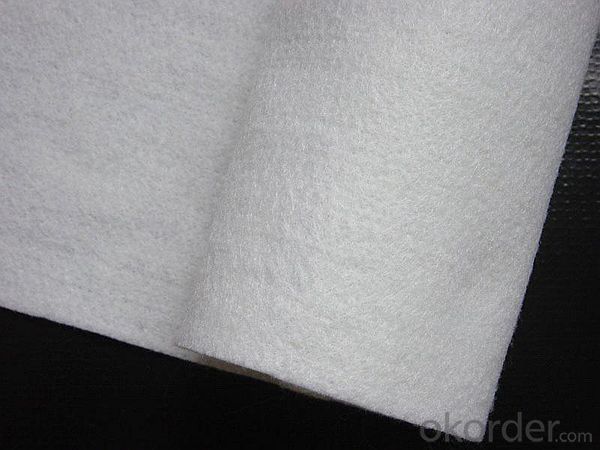
Packaging & Shipping
Packing: PLASTIC FILM INSIDE, AND WOVEN BAG OUTSIDE
Shipping: About 15 days after receipt the deposit
geotextile fabric
permeability,filtration,easy for construction
ISO and CE certificate
Good quality and competitive price
Our Service
Quality assurance
1.On a regular basis or as per your request,we entrust national testing agencies to conduct quality inspections
2. Strictly in accordance with the ISO9001-2008 international quality system standard,we monitor and manage the whole process throughout production,quality testing,and measurement to ensure product quality
3. For quality-related construction delay or substandard construction(except for damage or losses due to customer’s responsibility or irresistible natural disasters),we have refunding,replacement,and repair services.We will respond to customers’ feedbacks on quality issues within 24 hours.
FAQ:
Q: What kind of payments does jenor support?
A: T/T, L/C, Cash are accepted.
Q: Do you charge for the samples?
A: Accordeing to our company policy, the samples are free, we only charge the freight fee. And we will return the freight fee during the next order.
Q: Can you produce according to customers' design?
A: Sure, we are professional manufacturer, OEM and ODM are both welcome.
Q: Do you have other products?
A: Yes, please check the pictures:
- Q: What are the advantages of using geotextiles in storm surge protection systems?
- Geotextiles offer several advantages in storm surge protection systems. Firstly, they provide a strong barrier against erosive forces, effectively preventing soil erosion and maintaining the stability of the protection system. Secondly, geotextiles are permeable, allowing water to pass through while trapping sediment, thus reducing the risk of clogging and maintaining the functionality of the system. Additionally, geotextiles are lightweight and easy to install, making them a cost-effective and efficient solution for storm surge protection. Lastly, these materials are durable and resistant to degradation from UV rays and chemicals, ensuring a long lifespan and reliable performance in harsh environmental conditions.
- Q: Can geotextiles be used for erosion control in mining sites?
- Yes, geotextiles can be used for erosion control in mining sites. Geotextiles are permeable fabrics that are often used to stabilize soil and prevent erosion by separating, filtering, and reinforcing different layers of soil. In mining sites, where the land is disturbed and susceptible to erosion, geotextiles can be employed as an effective erosion control measure. They can be used to cover exposed soil, reinforce slopes, and retain sediment, minimizing erosion and protecting the ecosystem.
- Q: Can geotextiles be used in erosion control on riverbanks?
- Yes, geotextiles can be used in erosion control on riverbanks. They provide an effective solution by preventing soil erosion, improving stability, and allowing for vegetation growth. Geotextiles act as a barrier that retains soil particles while allowing water to pass through, reducing the impact of water flow on riverbanks and preventing further erosion.
- Q: What are the specifications for geotextiles in landfill liner applications?
- The specifications for geotextiles in landfill liner applications typically include factors such as the material's tensile strength, puncture resistance, permeability, and ability to withstand chemical exposure. These geotextiles must meet certain standards to ensure effective containment and environmental protection in landfill projects.
- Q: Build drainage board + geotextile what specifications are required
- General garden greening, roof garden, underground garage roof above the use of the drainage board for the square, each block between the drainage board can be deducted from each other, the length and breadth of 500mm * 500mm, the thickness is divided into 20mm, 25mm, 30mm three, Different thickness of the drainage board price is different. There is also a three-dimensional drainage board, is also often used for landscaping, roof garden, underground garage roof, this three-dimensional drainage board has a good water storage, drainage, waterproof function. Dimensional length of the drainage board is generally 2000mm * mm (2m * 15m), the thickness of the plate is generally divided into 0.8mm, 1.0mm, 1.5mm three, the same thickness of the plate can also do different height of the bulging, The general height of the bubble 10mm, 20mm two. Various specifications of the three-dimensional drainage board prices are not the same. No matter what kind of drainage board are required to use geotextile to use, generally with the geotextile length of 6000mm * mm, 2000mm * mm, geotextile specifications for the 150g / ㎡ and 200g / ㎡ of the majority.
- Q: What is the consequence of the geotextile of the ground floor
- What are the consequences of what can not be finalized, the first roof of the waterproof layer and waterproof protective layer is very important, this is the first barrier, imagine, now many of the green plants are large trees, grow 10 years or even 20 years After the roots will be very developed, think about how the pine trees on the tenacious know their strength, coupled with long-term erosion by the water, the concrete layer will gradually lose its ideal performance, barrier layer and drainage board will certainly be better To protect the role and drainage. So to speak, long-term vision of the words must be solidly do every layer, only focus on economic interests and short-term effects, then, within a few years will not be any problem.
- Q: How are geotextiles recycled?
- Geotextiles can be recycled through a process called mechanical recycling. This involves collecting used geotextiles, cleaning them, and breaking them down into smaller fibers or pellets. These recycled materials can then be used to manufacture new geotextiles or other products, reducing the need for raw materials and minimizing waste.
- Q: Are geotextiles suitable for use in geocell retaining walls?
- Yes, geotextiles are suitable for use in geocell retaining walls. Geotextiles help in enhancing the structural stability of the geocell walls by providing soil confinement, filtration, and erosion control. They prevent soil migration, improve drainage, and increase load-bearing capacity, making geotextiles an ideal choice for reinforcing geocell retaining walls.
- Q: Composite geotextile have what model specifications
- Composite geomembrane; mass per unit area g / m000 Membrane thickness mm0.25-0.350.3-0.5 breaking strength KN / m57.510.012.014.016.018.0 vertical and horizontal elongation at break% 30-100CBR breaking strength KN ≥ 1.11 . 51.92.22.52.83.0 Tearing strength KN≥0.150.250.320.40.480.560.62 Vertical and horizontal peel strength N / cm6 Vertical and horizontal permeability coefficient cm / sk * 10-11-10-13k = 1.0-9.9
- Q: Can geotextiles be used in erosion control on steep slopes?
- Yes, geotextiles can be used in erosion control on steep slopes. Geotextiles are specially designed fabrics that are used to stabilize soil and prevent erosion. They can be installed on steep slopes to reinforce the soil, reduce water flow, and promote vegetation growth, all of which help to prevent erosion and maintain slope stability.
Send your message to us
Pose Géotextile - Non-Woven Geotextile with Stabilization Non-Woven Fabric Roll
- Loading Port:
- China main port
- Payment Terms:
- TT OR LC
- Min Order Qty:
- 1000 m²
- Supply Capability:
- 1000000 m²/month
OKorder Service Pledge
OKorder Financial Service
Similar products
Hot products
Hot Searches
Related keywords
